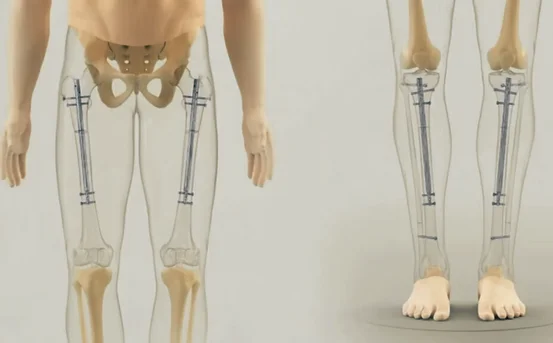Introduction
Appendectomy is a surgical procedure performed to remove the appendix, a small pouch attached to the large intestine. When the appendix becomes inflamed (a condition known as appendicitis), immediate surgery is often necessary to prevent rupture, which can lead to severe infection and complications. The surgery can be performed as an open surgery or using laparoscopic (minimally invasive) methods. Here’s a detailed look at the procedure in appendectomy surgery
Procedure of Appendectomy Surgery
- Patient Evaluation and Diagnosis
Before proceeding with the surgery, the patient undergoes a complete clinical evaluation including physical examination, blood tests, urine tests, and imaging like ultrasound or CT scan. These investigations help confirm appendicitis and rule out other abdominal conditions. If the diagnosis is clear and appendicitis is confirmed, the surgeon schedules an emergency appendectomy. - Preoperative Preparation
Once the decision for surgery is made, the patient is prepared for the operation. This includes fasting for a few hours prior to surgery to avoid anesthesia complications. Intravenous fluids are started, and antibiotics are administered to reduce infection risk. The surgical team also reviews the patient’s medical history and ensures consent is obtained for the procedure. - Choice Between Open and Laparoscopic Appendectomy
The surgeon decides whether to proceed with an open appendectomy or laparoscopic appendectomy. Laparoscopic surgery is usually preferred due to smaller incisions, faster recovery, and reduced scarring. However, in cases where the appendix has ruptured or there is widespread infection, open surgery might be chosen for better access and control. - Administration of Anesthesia
The procedure begins in the operating room with the administration of general anesthesia. The anesthesiologist ensures that the patient is completely unconscious and pain-free during the surgery. Vital signs such as heart rate, oxygen level, and blood pressure are monitored throughout the procedure. - Surgical Incision
For a laparoscopic appendectomy, three small incisions are made in the abdomen one near the belly button and two others depending on the surgeon’s approach. Through these incisions, a laparoscope (a thin tube with a camera) and surgical instruments are inserted. In an open appendectomy, a single larger incision (usually 2 to 4 inches long) is made in the lower right abdomen. - Locating the Appendix
Using the laparoscope, the surgeon locates the inflamed appendix by visually examining the abdominal cavity. The camera sends real-time images to a monitor, guiding the surgeon through the procedure. In open surgery, direct vision is used to locate and isolate the appendix from surrounding tissues. - Detachment and Removal of the Appendix
Once the appendix is located, it is carefully separated from the surrounding tissues and blood vessels. The blood supply to the appendix is tied off to prevent bleeding. Then, the appendix is cut and removed from the abdominal cavity. In laparoscopic surgery, the appendix is pulled out through one of the small incisions inside a protective pouch to avoid contamination. - Irrigation and Cleaning (If Needed)
If the appendix has ruptured or pus is found in the abdominal cavity, the area is thoroughly irrigated with sterile saline solution to wash out any infectious material. This helps reduce the risk of postoperative complications such as abscess formation or peritonitis. - Closure of the Incisions
Once the appendix is removed and the area cleaned, the incisions are closed. In laparoscopic surgery, the small incisions are usually closed with dissolvable sutures or surgical glue. In open surgery, the larger incision may require stitches or staples. A sterile dressing is applied over the wounds to protect them. - Recovery in the Postoperative Room
After the surgery, the patient is moved to the recovery room for observation. Vital signs are closely monitored until the patient fully wakes up from anesthesia. Pain medications are given as needed, and antibiotics may be continued to prevent infection. Most patients are able to sit up, walk, and consume liquids within a few hours post-surgery. - Hospital Stay and Discharge
In uncomplicated cases, laparoscopic appendectomy surgery patients are often discharged within 24 to 48 hours. Open surgery may require a slightly longer hospital stay. Before discharge, the patient receives instructions on wound care, pain management, diet, and activity restrictions. Follow-up appointments are also scheduled. - Postoperative Care and Recovery
Recovery from appendectomy surgery is generally smooth. Patients are advised to avoid heavy lifting or strenuous activity for at least two to four weeks. Signs of infection like redness, swelling, discharge, or fever should be reported to the doctor. With proper care, most patients return to their normal activities within a short time.
Conclusion
Laparoscopic appendectomy surgery has revolutionized the treatment of appendicitis by offering a safer, more efficient, and patient-friendly alternative to traditional open surgery. From faster recovery and less pain to minimal scarring and reduced complications, the benefits of this minimally invasive approach are extensive. It enables patients to get back to their normal lives with minimal disruption and fewer long-term issues.























